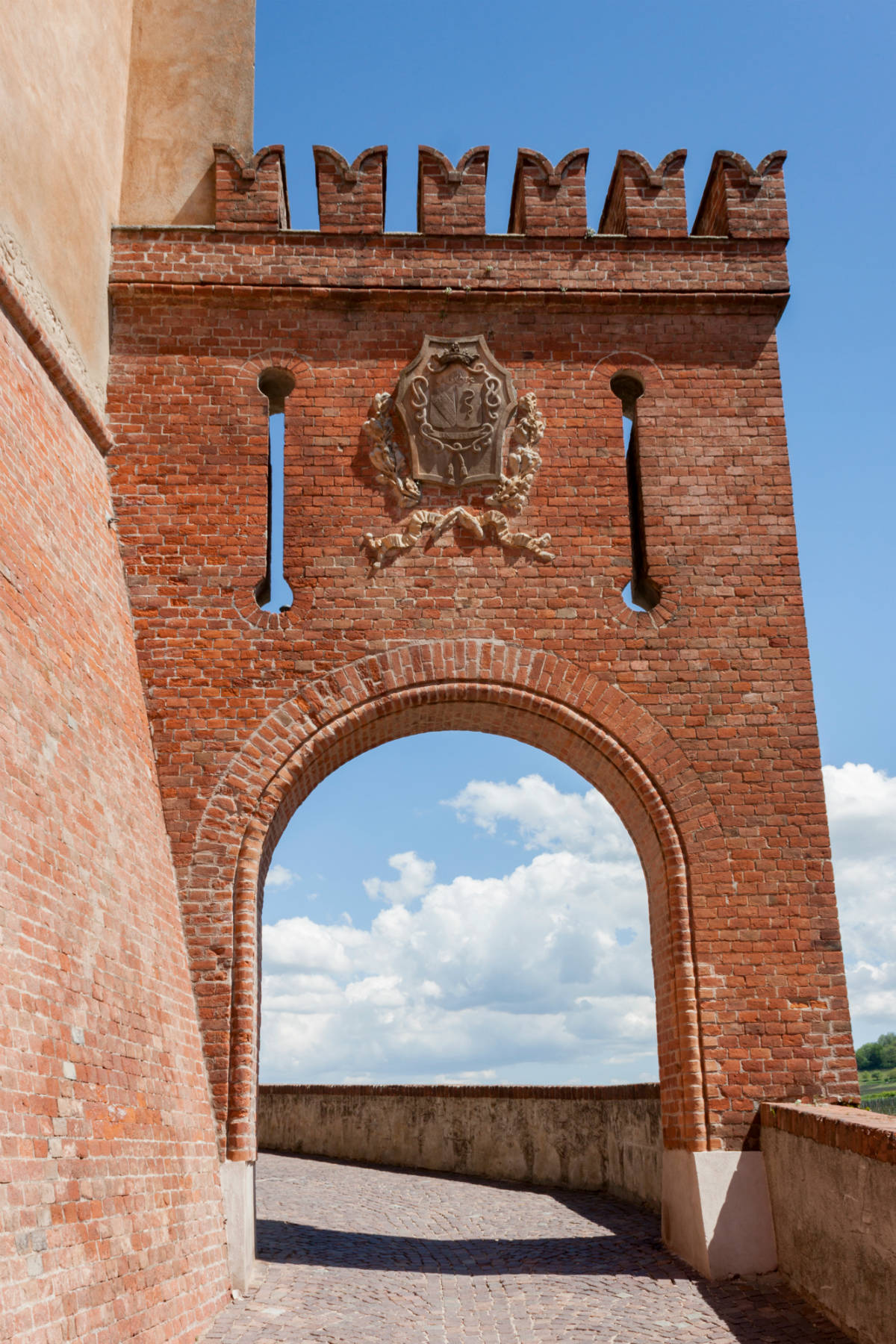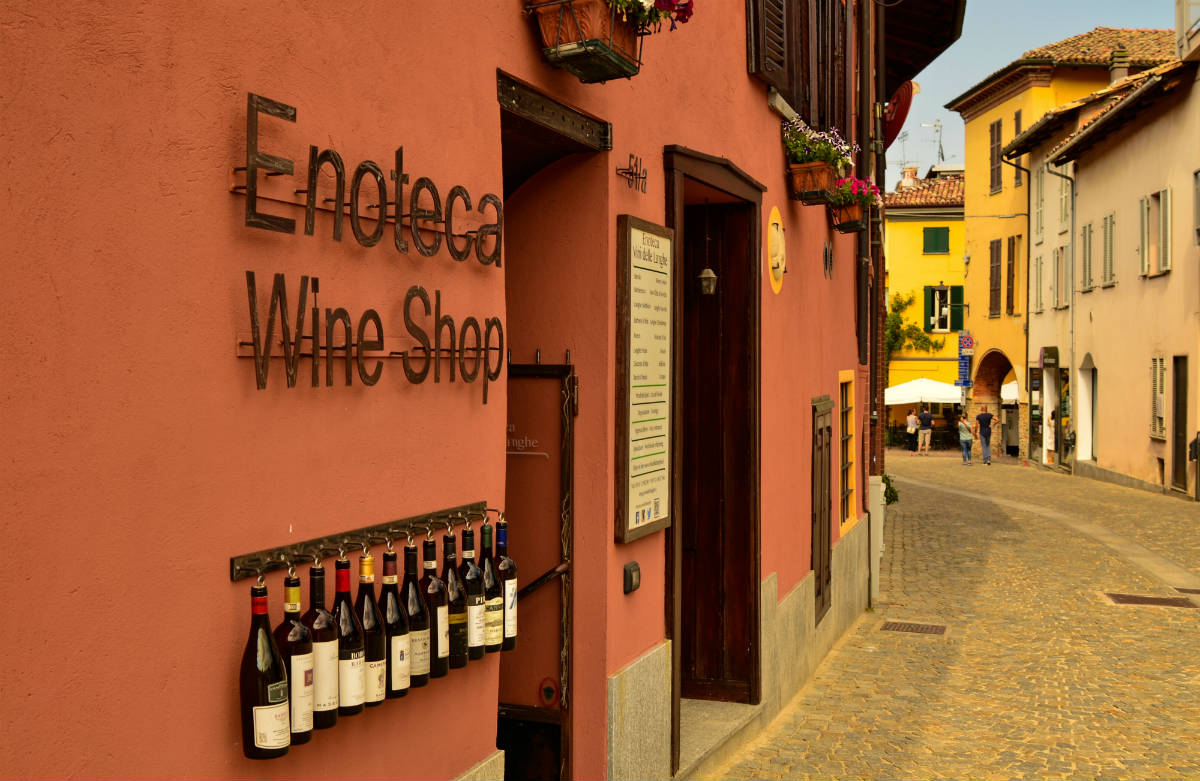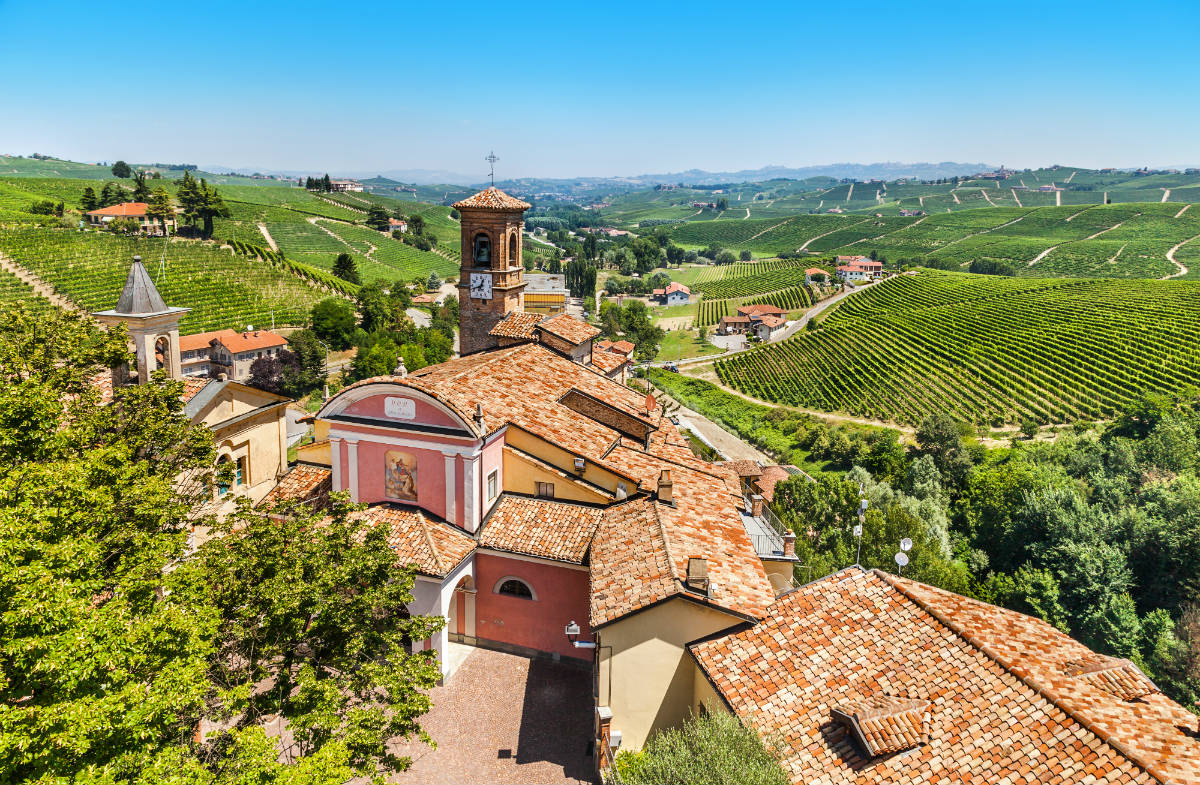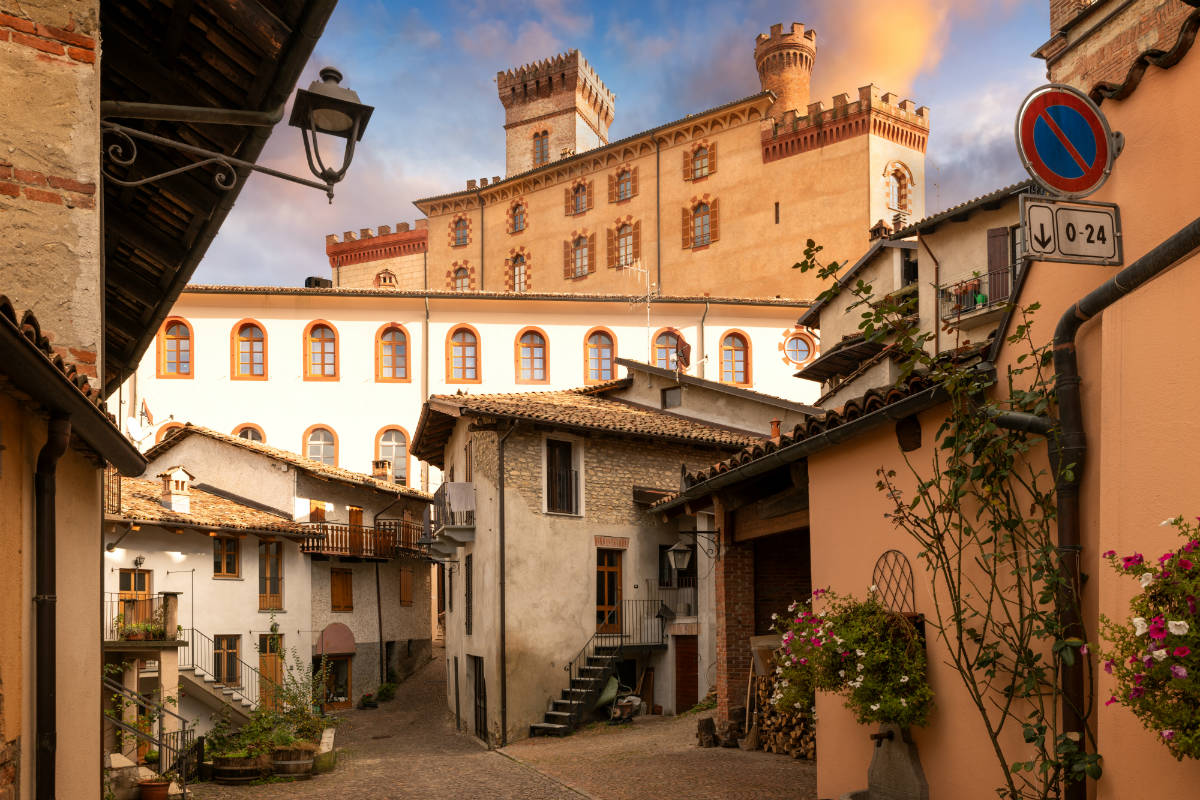Barolo
- Village with castle
- UNESCO heritage
- Suitable for disabled people
- Camper parking area
- Most beautiful villages in Italy
- Orange Flag Countries
- City of wine
About the village
The village of Barolo (Bareu or Bareul in Piedmontese) is located in the historic region of the Langhe, in Piedmont. Set on a small plateau, in the shape of a spur, is protected by the surrounding mountains, disposed to amphitheater. Strikes of the conformation of the different positioning of its urban core with respect to the adjacent countries, placed around the top of a hill or along a ridge.
There are no precise information on the origin of the village. Although the area was inhabited in prehistoric times by tribes Celto-ligures, the first settlement of which there is proof on the territory was of Barbarian origin and dating back to the Early Middle Ages. During the longobard dominion depended from Gastaldo di Diano, step is then under the County of Alba and subsequently under the brand of Turin. The original nucleus of the castle was erected in that period by Berengario I, as a defense against the Saracen raids. In 1200 the country is mentioned in the Rigestum Comunis Albe with the name of Villa Barogly. In 1250 the Falletti family, acquired all the possessions of Barolo from nearby Alba. The Falletti were a powerful family of bankers, exponents of the new bourgeoisie, which marked the destiny of Barolo and the surrounding areas. Around 1300 arrived to check up on a fifty Piedmontese feuds. In 1486 Barolo became part of the State Monferrino, then passing in 1631 Ai Savoia with the Treaty of Cherasco. Barolo then became a marquisate in 1730, the first Marquis was Gerolamo IV. After Gerolamo IV there were only two other Marchesi: Ottavio Alessandro Falletti and Carlo Tancredi, the death of the latter ruled his wife the Marchesa Juliette Colbert, which was distinguished by its brilliance and its actions in favor of the weakest. At his death in 1864 between its willingness there was the creation of the Opera Pia Barolo to which left the whole heritage of the family.
Barolo has lived since then its ups and downs, as well as the viticulture. Also here, as elsewhere, the peasant civilisation has paid his bill, fact of abandonment of their own land and emigration because of the difficult conditions of life which the phylloxera gave a significant contribution. The early years of the second world war of the twentieth century, those of Hell wonderfully described by the great writer Beppe Fenoglio were not very different in terms of hardness. In this period it was followed by another characterised by the exodus toward the city, which offered a job safer and less distress, and which lasted until the years '60: the consequence of this was another step of abandonment of the countryside, that here was however lower than in the Alta Langa and to other areas of Piedmont. The most recent years are instead making record a reverse phenomenon: young people consciously chose the profession of the winemaker, accomplice the presence of the nearby Oenological School of Alba, while older people return to do so. All this is possible thanks to the renewed interest in the wine and its interesting profitability.
Today Barolo is a country of wine in the sense of the narrow end: its presence is breathed in fact on every street corner. And the Barolo wine, which is not as all other makes of Barolo country a bit of a sort of "sacred place", which the followers of the pagan cult of wine should occasionally to pay homage with a "pilgrimage". This hope has already been translated by some years in reality, making grow slowly a tourist activity capable of giving a significant added value to the local economy. This does not seem to have altered neither the peaceful character of the gentiles here nor their pace of life. Do not be surprised therefore if Barolo, unlike other places become suddenly famous for wine, is still a country of ownership of its inhabitants: This character can be seen by visiting the baker or in pharmacy, where it is not unusual to wait for a few minutes your turn while the person in front of you lies ragguagliando the operator on the state of health of some of his beloved. In these cases don't get nervous or by the impatience but let yourself to be lulled by the rhythm, sweet as the many hills that surround this magical village.
Certainly deserves a visit the Castello dei Marchesi Falletti, inside which is housed the WiMu, the Ethnographic Museum and enology of Barolo.
Village of Barolo
Municipality of Barolo
Province of Cuneo
Piedmont Region
Population: 713
Altitude centre: 301 m s.l.m.
Unesco Site:
Wine landscapes of Piedmont: Langhe, Roero and Monferrato
the Municipality is parto of:
Città del vino
I Borghi più belli d'Italia
Paesi bandiera arancione
Unesco World Heritage
Unione Colline di Langa e del Barolo
Acknowledgments
Orange Flag - Italian Touring Club
Municipality
Piazza Caduti per la libertà 3 - Tel. +39 0173 56106
3.32 Kilometers from Barolo
3.33 Kilometers from Barolo
4.64 Kilometers from Barolo
4.68 Kilometers from Barolo
6.34 Kilometers from Barolo
8.92 Kilometers from Barolo
35.67 Kilometers from Barolo
3.33 Kilometers from Barolo
36.04 Kilometers from Barolo
60.19 Kilometers from Barolo
52.33 Kilometers from Barolo
36.06 Kilometers from Barolo
BY CAR
- Take the A6 Torino - Savona motorway to the Cherasco exit
- Take the A33 Asti - Cuneo motorway to the Alba exit
ON THE TRAIN
- Alba train station
- Bra railway station
- Monchiero-Dogliani railway station
BY PLANE
- Turin airport
- Cuneo Levaldigi airport
- Villanova d'Albenga Airport "C. Panero"
Travel proposals in Barolo and in its territory
Sleep, eat, buy...
3.68 Kilometers from Barolo
60.43 Kilometers from Barolo
20.97 Kilometers from Barolo
18.84 Kilometers from Barolo
2.32 Kilometers from Barolo
2.82 Kilometers from Barolo
19.27 Kilometers from Barolo
2.82 Kilometers from Barolo










